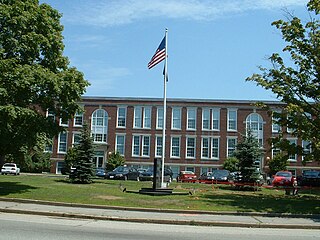
Dartmouth is a coastal town in Bristol County, Massachusetts. Old Dartmouth was the first area of Southeastern Massachusetts to be settled by Europeans, primarily English. Dartmouth is part of New England's farm coast, which consists of a chain of historic coastal villages, vineyards, and farms. June 8, 2014 marked the 350th year of Dartmouth's incorporation as a town. It is also part of the Massachusetts South Coast. The local weekly newspapers are The Dartmouth/Westport Chronicle and Dartmouth Week. The Portuguese municipality of Lagoa is twinned with the town; along with several other Massachusetts and Rhode Island towns and cities around Bristol County.
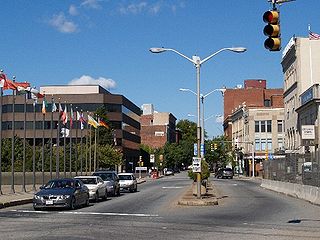
Fall River is a city in Bristol County, Massachusetts, United States. Fall River's population was 94,000 at the 2020 United States census, making it the tenth-largest city in the state.

New Bedford is a city in Bristol County, Massachusetts, United States. It is located on the Acushnet River in what is known as the South Coast region. Up through the 17th century, the area was the territory of the Wampanoag Native American people. English colonists bought the land on which New Bedford would later be built from the Wampanoag in 1652, and the original colonial settlement that would later become the city was founded by English Quakers in the late 17th century. The town of New Bedford itself was officially incorporated in 1787.

The University of Massachusetts is the five-campus public university system and the only public research system in the Commonwealth of Massachusetts. The university system includes five campuses, a satellite campus in Springfield and also 25 campuses throughout California and Washington with the University of Massachusetts Global.

The University of Massachusetts Lowell is a public research university in Lowell, Massachusetts, with a satellite campus in Haverhill, Massachusetts. It is the northernmost member of the University of Massachusetts public university system and has been accredited by the New England Commission of Higher Education (NECHE) since 1975. With 1,110 faculty members and over 18,000 students, it is the largest university in the Merrimack Valley and the second-largest public institution in the state. It is classified among "R2: Doctoral Universities – High research activity".
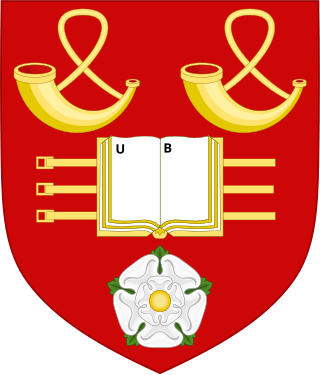
The University of Bradford is a public research university located in the city of Bradford, West Yorkshire, England. A plate glass university, it received its royal charter in 1966, making it the 40th university to be created in Britain, but can trace its origins back to the establishment of the industrial West Yorkshire town's Mechanics Institute in 1832.
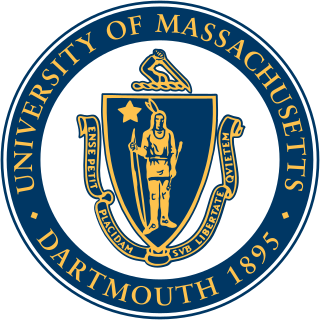
The University of Massachusetts Dartmouth is a public research university in Dartmouth, Massachusetts. It is the southernmost campus of the University of Massachusetts system. Formerly Southeastern Massachusetts University, it was merged into the University of Massachusetts system in 1991.
An institute of technology is an institution of tertiary education that specializes in engineering, technology, applied science, and natural sciences.

The South Coast of Massachusetts is the region of southeastern Massachusetts consisting of the southern Bristol and Plymouth counties, bordering Buzzards Bay, and includes the cities of Fall River, New Bedford, the southeastern tip of East Taunton and nearby towns. The Rhode Island towns of Tiverton and Little Compton, located in Newport County, are often included within the South Coast designation due to regional similarities with adjacent communities.
Southern New England School of Law (SNESL) was a non-profit law school located in North Dartmouth, Massachusetts that operated from 1981 to 2010. At its closure, its assets were donated to the University of Massachusetts system to become the basis for the University of Massachusetts School of Law.
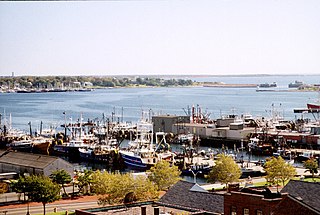
Southeastern Massachusetts is a region of Massachusetts located south of Boston and east of Rhode Island. It is commonly used to describe areas with cultural ties to both Boston and Providence, Rhode Island, and includes the cities of New Bedford and Fall River and their respective suburbs. Despite the location of Cape Cod and the islands to its south, which are the southeasternmost parts of the state, they are not often grouped in this designation. At its broadest definition, it includes all of Massachusetts south of Boston, southeast of Worcester, and east of Providence, Rhode Island, while at its narrowest definition, it is Bristol County and the Western portion of Plymouth County.

The Swain School of Design(1881–1988) was an independent tuition-free non-profit school of higher learning in New Bedford, Massachusetts. It first defined its mission as a "school of design" for the "application of art to the industries" in 1902, making it the 12th oldest art school in the United States. By then, the 19th-century whaling capital of the world was already in a textile boom, one that required designers. In response, Swain's trustees developed a meticulous program of study. In the first year, students would train for 40 hours a week in "Pure Design" to prepare them for a second year in "Historic Design." Applied skills spanned a panoply of techniques, involving the design of picture frames, book and magazine covers, illuminations, lettering, stained glass, metalwork, architectural moldings and the "application of ornament to prints." Within a generation, that foresight had made New Bedford, with nearly 70 mills and 41,000 mill workers, the richest city per capita in the U.S.
The Lowell Technological Institute was a public college located in Lowell, Massachusetts, United States. It was founded in 1895 as the Lowell Textile School. Its campus is now part of the University of Massachusetts Lowell.

For much of its history, the city of Fall River, Massachusetts has been defined by the rise and fall of its cotton textile industry. From its beginnings as a rural outpost of the Plymouth Colony, the city grew to become the largest textile producing center in the United States during the 19th century, with over one hundred mills in operation by 1920. Even with the demise of local textile productions during the 20th century, there remains a lasting legacy of its impact on the city.

Colonel Richard Borden (1795–1874) was an American businessman and civic leader from Fall River, Massachusetts. He co-founded the Fall River Iron Works in 1821, and later built several early cotton mills, as well as the Fall River Line, Fall River Gas Works Company, the Fall River Railroad, banks and other businesses. The Borden family would dominate the economic and civic life of Fall River into the early 20th century.

BridgeValley Community and Technical College (BVCTC) is a public community college with multiple campuses in West Virginia. It was formed in 2014 by the merger of Bridgemont Community and Technical College of Montgomery, West Virginia and Kanawha Valley Community and Technical College of South Charleston, West Virginia. The college is part of the West Virginia Community and Technical College System.
Jean F. MacCormack is the past president of the Edward M. Kennedy Institute for the United States Senate, serving in the role from 2014 to 2017. MacCormack is the former Chancellor of University of Massachusetts Dartmouth, where she led from 1999 to 2012.
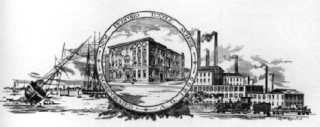
The New Bedford Institute of Technology was a public college located in New Bedford, Massachusetts, United States. It was founded in 1899 as the New Bedford Textile School.

Delta Kappa Phi (ΔΚΦ) is an American professional–social collegiate fraternity established in 1899. As of 2017 it has one active chapter.

















